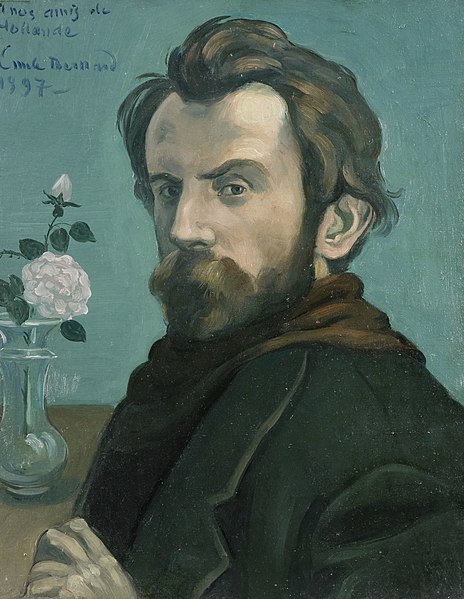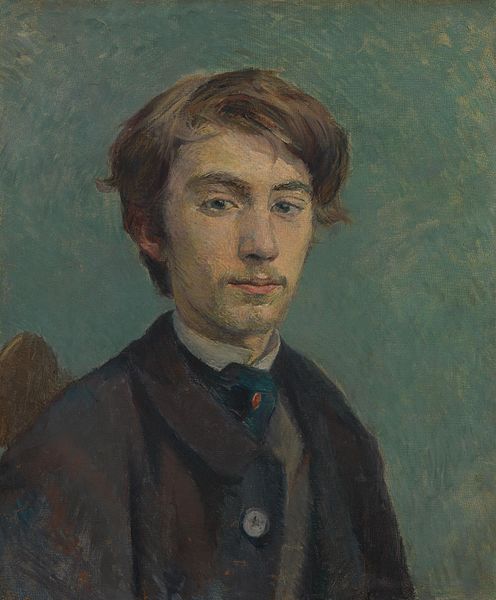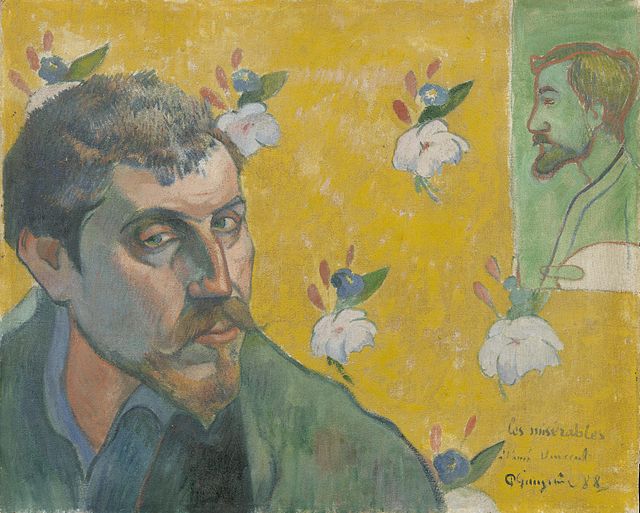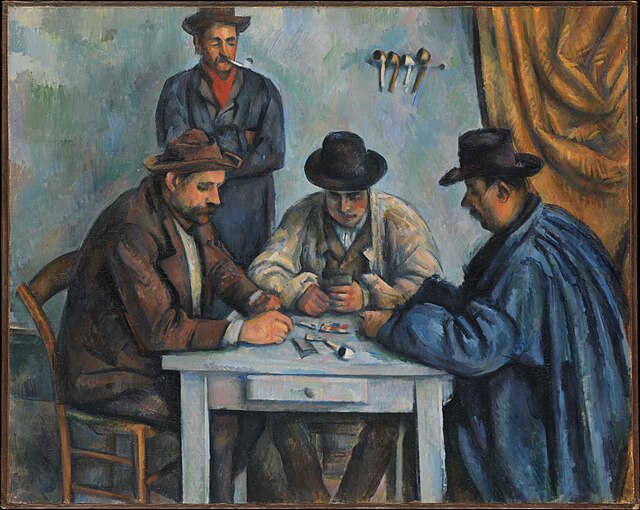Émile Henri Bernard was a French Post-Impressionist painter and writer, who had artistic friendships with Vincent van Gogh, Paul Gauguin and Eugène Boch, and at a later time, Paul Cézanne. Most of his notable work was accomplished at a young age, in the years 1886 through 1897. He is also associated with Cloisonnism and Synthetism, two late 19th-century art movements. Less known is Bernard's literary work, comprising plays, poetry, and art criticism as well as art historical statements that contain first-hand information on the crucial period of modern art to which Bernard had contributed.
Self-portrait with vase of flowers (1897)
Émile Bernard by Henri de Toulouse-Lautrec (1886)
Self-portrait with portrait of Paul Gauguin, Bernard, 1888.
Gauguin's counterpiece, same year, for same 'Vincent'.
Post-Impressionism was a predominantly French art movement that developed roughly between 1886 and 1905, from the last Impressionist exhibition to the birth of Fauvism. Post-Impressionism emerged as a reaction against Impressionists' concern for the naturalistic depiction of light and colour. Its broad emphasis on abstract qualities or symbolic content means Post-Impressionism encompasses Les Nabis, Neo-Impressionism, Symbolism, Cloisonnism, the Pont-Aven School, and Synthetism, along with some later Impressionists' work. The movement's principal artists were Paul Cézanne, Paul Gauguin, Vincent van Gogh and Georges Seurat.
Henri Rousseau, The Centenary of Independence, 1892, Getty Center, Los Angeles
Paul Cézanne, Les Joueurs de cartes, Metropolitan Museum of Art, New York
Poster of the 1889 Exhibition of Paintings by the Impressionist and Synthetist Group, at Café des Arts, known as The Volpini Exhibition, 1889
Henri de Toulouse-Lautrec, Portrait of Émile Bernard, 1886, Tate Gallery London







